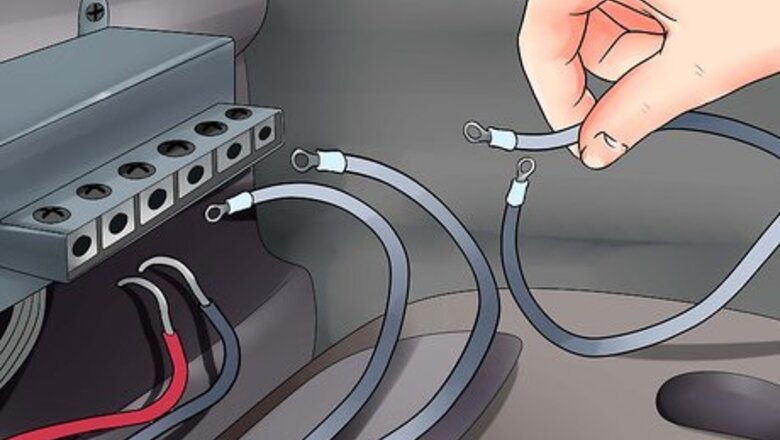
views
Installing a Switch in Your Device's Paneling
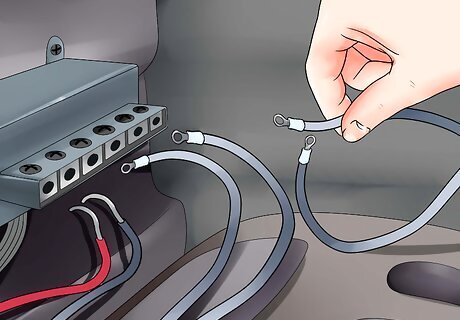
Disconnect all power from the device before beginning. As with nearly all types of electrical work, it's extremely important to ensure that there's no risk of electric shock before starting work on your device. Attempting to modify a "live" device is an easy way to seriously hurt yourself or cause a short circuit and permanently damage your device. The precise method for disconnecting your device from its power source differs depending on the device you're working on. For cars, you'll want to disconnect the negative terminal of the battery, for instance, while other devices may require you to unplug or manually disconnect the power supply in some other way.
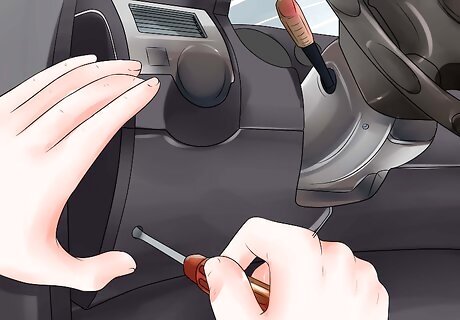
Remove the panel or housing from the device. Installing a toggle switch on a device requires you to gain access to the device's internal wiring, which usually means removing the device's exterior paneling or housing. If possible, rather than removing the paneling for the entire object, try to remove only the paneling from the part of the device where you intend to install the switch. For instance, if you're installing a toggle switch in your car, you'll want to remove the dash paneling, if possible—a small portion of paneling where you want to install the switch, rather than the entire dash panel. This may require screwdrivers, pry bars, "panel poppers," or other specialized tools.
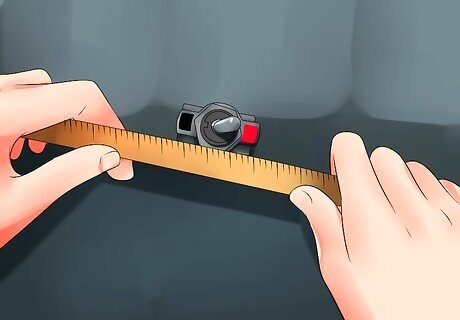
Measure the diameter of the switch bushing that will protrude through the panel. To accommodate your toggle switch, you'll usually need to create a suitably-sized and shaped hole in the paneling or housing of your device. Measure the dimensions of your switch bushing (the part of the switch in which the "lever" is seated) so that you'll know how large to make your hole. For basic toggle switches, this is usually a circular hole, but depending on the type of switch you're using, differently-shaped holes may be necessary.
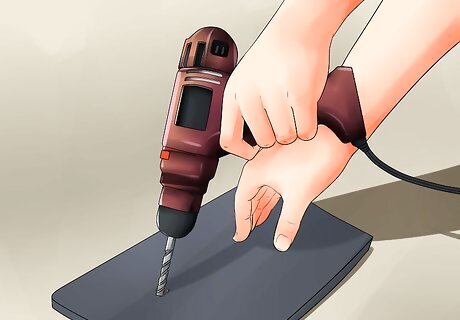
Drill or cut a hole through the panel to fit your hole. Next, make a hole in the paneling of your device to fit your switch. For the most basic toggle switches with circular bushings, this will mean drilling with a bit slightly larger than the diameter of the switch bushing. For differently-shaped holes, you may need to use a jigsaw, sandpaper, and/or other tools. Use an HSS (high-speed steel) twist drill bit to drill through wood, plastic or mild steel. A spade bit may also be used if you are drilling through wood.
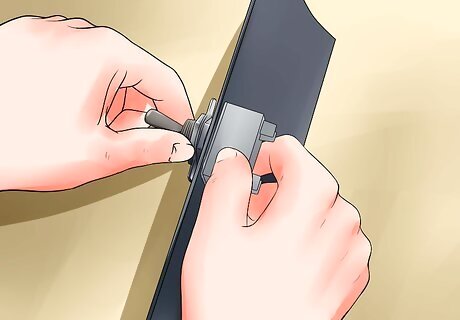
Install the switch from the underside of the panel. Finally, put your switch in the hole you've just carved for it, passing through from the underside. Secure the toggle switch in place with its mount. This usually means installing the mount over the hole, passing the toggle switch through, and tightening it in place with a nut. For example, in a basic toggle switch setup, you might have to thread a jam nut onto the switch's bushing to fasten it to the panel mount, then tighten the nut with an adjustable wrench.
Connecting Your Toggle Switch to Your Device's Wiring

Defer to the instructions provided with your switch or your device. The types of devices onto which you might want to install a toggle switch will have electrical configurations that vary greatly. Thus, no single guide is likely to provide a one-size-fits-all solution. The steps in this section are meant to be taken as general guidelines for a simple on-off ((single pole, single throw or SPST) toggle switch. They should never supersede any instructions included with your toggle switch or the device into which you're installing it. When in doubt, consult a skilled electrician to save time and avoid inadvertent damage.
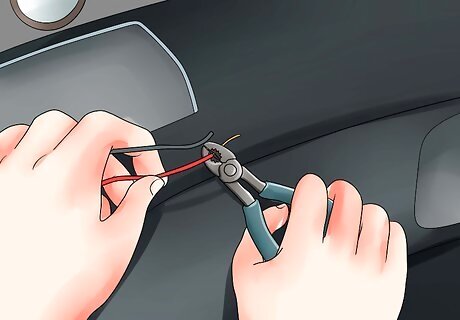
Cut the supply wire in your device. For your toggle switch to function as an on-off switch, you'll need to wire your toggle switch to the device's power supply. Use wire cutters to cut your device's supply wire in a location that best allows for routing either or both ends of the wire to the switch. Strip approximately ⁄2 inch (1.3 cm) of insulation from each end of the wire using a wire stripper.
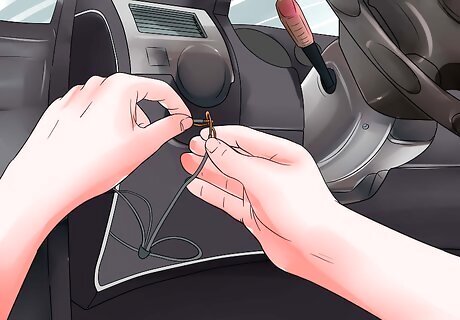
Add a pigtail if either end of the wire does not reach the switch. A pigtail is a short length of wire (usually about 6 inches (15 cm)) with both ends stripped. It can be connected to wires that aren't quite long enough to reach your toggle switch as a sort of "extender." Add a pigtail as follows: Determine the gauge of the existing wire and obtain a wire of the same color and gauge. Cut a piece of the wire long enough to reach from the cut end of the supply wire to the toggle switch. Strip ⁄2 inch (1.3 cm) of insulation from each end of this piece of wire. Connect one end of the pigtail wire to the supply wire by twisting the ends of the wires together clockwise. Twist a wire nut of the proper size clockwise over the wire joint until the wire nut is tight.
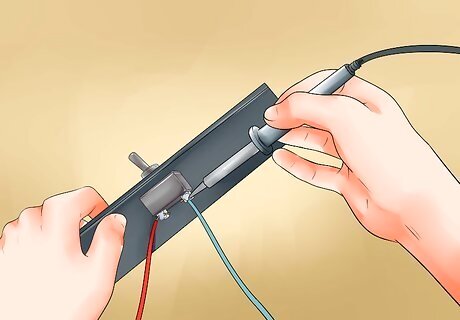
Connect the supply wire to the toggle switch. At this point, you've made a break in the device's supply wire, you'll need to add your toggle switch in the middle of the break so that it can regulate the flow of electricity through the circuit. The way you do this depends on the type of toggle switch you have. See below: If your toggle switch has wire leads, twist the end of each lead to one of the supply wires (or pigtail extensions) and twist a wire nut over each wire connection until they're tight. If your toggle switch has screw terminals, loosen the terminal screws, loop the ends of the supply wires and hook each loop over a terminal screw so the loops point clockwise around the shaft of each terminal screw. Then, tighten the terminal screws. If the toggle switch has solder connections, bend the ends of the wires around the switch terminals. Needle-nose pliers may be useful. Heat each terminal with a soldering iron while holding the end of solder wire in contact with the terminal (but not in direct contact with the soldering iron tip). When the solder begins to melt, withdraw the soldering iron tip and allow the melting solder to flow and cover the wire-terminal joint.

Test your switch. When your toggle switch is wired properly, carefully reconnect the device's power supply and test the function of the toggle switch. If it works as intended, you may replace the panel or device housing. Congratulations! You've successfully installed a toggle switch.
Purchasing the Right Switch for your Device
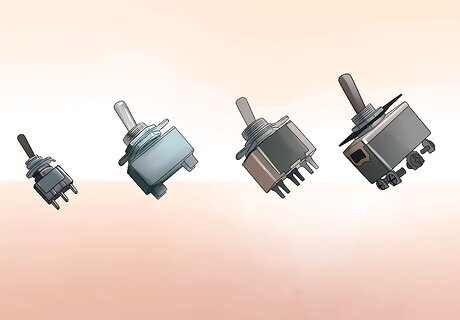
Select a switch with the appropriate number of "poles" and "throws" for your purpose. In electrical terminology, a toggle switch can have one or more "poles" and "throws." Apole refers to the number of circuits controlled by the switch—usually, this is the number of outwardly-visible "levers" on the switch. A throw refers to the number of positions a switch has. Usually, for simple on-off capability, you'll want an SPST switch. To ensure you select the right toggle switch, check with the manufacturer or ask a salesperson to help you. Ensure that the switch is compatible with the device you intend to use it for. Read through the instructions or paperwork that come with the switch to make sure it will work for your purposes. However, if the device you're attaching your toggle switch needs more than basic on-off control, you may need a more complicated switch. For instance, if you're installing a toggle switch to control a car's hydraulic system, you'll probably want a switch with multiple poles to control the hydraulics for the different sides of your car and/or multiple throws so that you'll be able to set the hydraulics to "off" or varying degrees of "on", rather than just simply "off" or "on." Note that there are differences between British and American terminology when it comes to the colloquial names for common switches. In the States, an SPST switch is also called a "two-way" switch, whereas in Britain, it's called a "one-way" switch. Similarly, in the U.S. and Britain, an SPDT (single pole, double throw) switch is called a "three-way" and "two-way" switch, respectively.
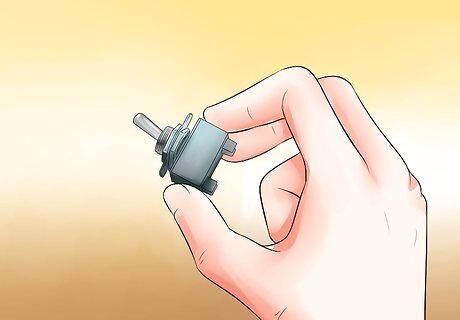
Choose a switch rated above the maximum current (in amps) that will flow through the switch. Different electrical devices require different amounts of current to power them. When searching for switches, make sure the contact rating of the switch you select is equal to (or greater than) the circuit current you plan for it to regulate.
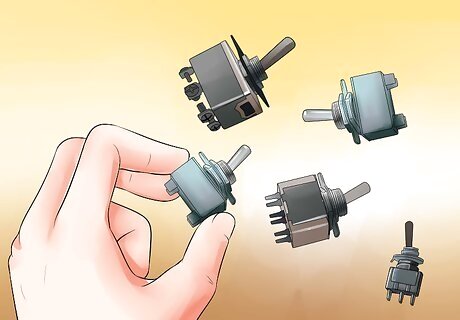
Select a switch with the right type of electrical connections for your project. Your toggle switch is useless if it can't connect to the device it's supposed to operate. Be sure to pick a switch that's compatible with the electrical connections inside your device. If you don't, you may find yourself having to make improvised connections with a soldering iron, electrical tape, etc., which can be daunting for the inexperienced. Common types of switch connections include: Screw connectors. Solder lugs, pins or terminals. Wire leads.
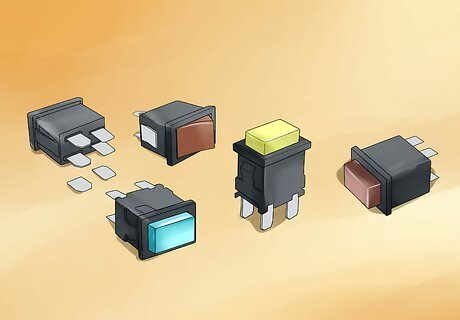
Pick a suitable mount. If your device comes with spaces specifically designed to accommodate toggle switches, you may be able to get away without having to make any extraneous modifications to your device. However, the types of devices in which toggle switches are often installed usually don't. Thus, you should usually expect to need to drill a hole for the switch and to install a mount to seat the switch in. Often, you'll need a type of mount called a panel mount that interfaces with a type of switch called a panel switch. A panel mount switch has a threaded body that protrudes up through a hole in a panel and is secured to the panel with a panel or jam nut.



















Comments
0 comment